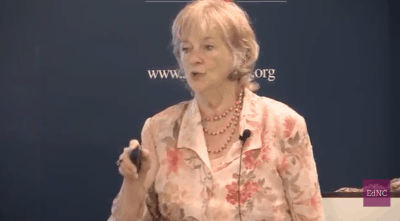Editor’s Note: This article was first published in The Gaston Gazette on June 7, 2015.
Yogi Berra once said, “When you come to a fork in the road, take it.”
With presidential vacancies in both the University of North Carolina system and community college system, we may have reached such a fork. Further, there are persistent rumors that Superintendent of Public Instruction June Atkinson will not seek re-election next year, so all three branches of our education system could be looking for top leadership.
It’s an ideal time for serious examination of how we organize, fund and administer public education.
In 1930, Gov. O. Max Gardner commissioned the Brookings Institution, a private nonpartisan think-tank, to come up with suggestions “to promote increased efficiency and economy in the conduct of the governmental affairs of the State.” They recommended, and we consolidated, the existing three public universities into one system. Gov. Luther Hodges asked Dallas Herring, chair of the State Board of Education, to develop a plan for industrial education centers.
In 1963, Herring helped consolidate those centers and six community colleges into our community college system, initially governed by the State Board of Education, but in 1979 by a separate Community College Board. Gov. Bob Scott initiated the 1971 Higher Education Reorganization Act, placing the 16 junior and senior colleges and universities into the University of North Carolina system, with one governing board. For more than 35 years, there have been no major changes to this arrangement.
We have a complicated structure of three separate and dissimilar governance systems that are not responsible to, nor do they communicate well with, each other or us. In K-12 primary education, the Constitution says this system shall be governed by a State Board of Education, appointed by the governor, with a superintendent of public instruction who is elected statewide and is the secretary and chief administrative officer of the board.
We’ve had court battles to untangle who is in charge. Our 58-school Community College System Board is appointed by the governor and legislature, administered by a president selected by that board. The 17-campus University of North Carolina System Board of Governors consists of 32 members who campaign for and are selected entirely by the legislature, with a president selected by the board. With three different governance structures, each reporting to and accountable to different entities, it’s easy for the left hand not to know what the right is doing.
There are frequently overlapping and blurring lines of authority and responsibility. High schools offer early college educations and more job preparation courses. Community colleges are increasingly offering the first two years of college, and both the universities and community colleges end up providing remediation for English and math not learned in public schools.
Public education receives $11.8 billion, more than half our $21.1 billion General Fund state budget. This alone is reason enough to compel periodic examinations to determine if we are getting the best bang for our buck and providing the best education for our people.
Maybe we need one combined system or perhaps a more uniform system of governance.
Certainly, we need better cooperation and transparency.
It is possible that we might choose to continue our present course, but with the three top education vacancies, now is the time we should re-examine our current system before striking off in new leadership directions.





